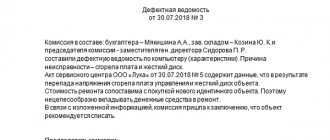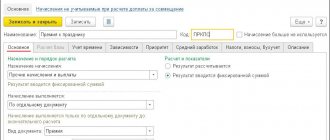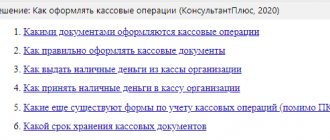It is impossible to imagine a modern office or enterprise without computers, printers, copiers, faxes and other office equipment. It faithfully serves entrepreneurs, but there comes a time when the equipment either becomes obsolete or breaks down irreparably. New equipment will be purchased to replace the old one, but outdated devices that have turned into garbage cannot simply be taken to the nearest trash heap.
Why computer equipment needs special disposal and how to correctly carry out this procedure from the point of view of the legislation of the Russian Federation, read this article.
How to write off office equipment from the balance sheet ?
Why unnecessary office equipment is not just trash
Anything that cannot be sold (donated) or reused is unwanted items, in other words, garbage. The accumulation of such items is unacceptable in an enterprise where everything should work to make a profit. If the computer is no longer efficient or is hopelessly damaged, you cannot work on it, which means you will need to purchase another one to replace it.
Naturally, you need to get rid of useless things. Assets such as office equipment are written off and disposed of according to a special procedure provided for by law. Reasons for regulating the disposal of office equipment:
- Preventing harm to the environment. Used office equipment is classified as hazardous waste. In the production of computers and other units, substances that are hazardous to life are used, for example, lead, arsenic, etc. The usual throwing away of equipment, especially regularly, can cause irreparable harm to the environment and health.
- Saving what can be saved. Office equipment includes parts containing non-ferrous metal, as well as a certain amount of precious metals: gold, silver, platinum. Thus, the Tax Code of the Russian Federation considers even completely unusable equipment not without a certain value. The metal can be recovered and reused, and the valuable components must be properly accounted for as part of the assets.
IMPORTANT INFORMATION! A sufficient basis for the regulated disposal of computer equipment is its legislative justification. In other words, an organization or person found to be routinely disposing of such equipment will be held administratively liable for environmental pollution and violation of epidemiological standards.
What the law says
The disposal of obsolete office equipment is regulated by several legal acts:
- Administrative Code in Art. 8.2 prohibits throwing away equipment along with ordinary garbage, and the ban applies to both individuals and organizations.
- A separate ban on this action for legal entities is prescribed in Decree of the Government of the Russian Federation No. 340.
- Federal Law No. 89 prohibits enterprises from doing this on their own.
- Clause 2 art. 20 of Federal Law No. 41 of March 26, 1998 stipulates improper disposal of equipment as a violation of the Tax Code of the Russian Federation due to the content of valuable metals in it, which must be recycled and sent to the state fund.
- Specialized enterprises are allowed to dispose of equipment if they have the appropriate license, in accordance with Decree of the Government of the Russian Federation No. 524 of August 26, 2006.
How to identify parts of office equipment containing precious metals ?
What exactly needs to be recycled
The list of equipment subject to mandatory disposal due to potential danger is contained in the order of the Ministry of Natural Resources, as well as in Decree of the Government of the Russian Federation No. 818. It includes:
- computers;
- monitors;
- fluorescent lamps;
- Medical equipment;
- Appliances;
- batteries;
- scanners;
- copiers;
- printers and cartridges for them, etc.
IMPORTANT! It is necessary to properly dispose of not only the units themselves, but also their scrap, that is, even individual parts of broken equipment.
Disposal of office equipment before disposal
If an ordinary consumer can simply contact a company engaged in recycling equipment, the legal entity must have a legislative basis for this: write off this property from the balance sheet. It's not as simple as it seems.
The main difficulty of this procedure is determining the residual value of used equipment. In order for the write-off act to be legal, it is necessary to competently assess the technical and moral aspects of the devices and their material value, which only experts can do. This examination can only be carried out by a specially certified organization, issuing a conclusion on the unsuitability of the equipment for further use.
How to take into account the recycling of computer equipment in accounting ?
Violation of the write-off procedure is fraught with administrative and even criminal liability, because equipment is of material value. It will certainly provoke irregularities in accounting, which is fraught with sanctions for the management and chief accountant of the organization:
- a fine of 20-50 minimum wages for executives;
- a fine of 100-1000 minimum wages imposed on the organization.
ATTENTION! The decision to install old equipment at the enterprise in order to avoid the costs of write-off and disposal will not save money in any way, since you will have to pay tax on the equipment that remains an asset.
Accounting entries for writing off office equipment
If a decision is made to dispose of certain equipment, this a priori means that as an asset it has been fully depreciated and no longer takes part in production activities. Its accounting is carried out on account 01 “Fixed assets” and off-balance sheet account 013 “Depreciation fund for the reproduction of intangible assets.”
In the postings, the write-off is documented as a disposal of fixed assets. Subsequent disposal costs should be written off in the same accounting period, although the disposal itself may occur at a later date.
Question: The subject of the purchase is the recycling of computer office equipment (computers, printers, monitors). Should participants in such procurement have any licenses? View answer
Receipt of fixed assets that require and do not require installation
CJSC "BKR-Intercom-Audit"
The materials were prepared by a group of consultants and methodologists of JSC
Fixed assets are part of the property used as means of labor in the production of products, performance of work or provision of services.
Organizations and enterprises must keep accounting records of fixed assets in accordance with the Accounting Regulations “Accounting for Fixed Assets” PBU 6/01, approved by Order of the Ministry of Finance of the Russian Federation dated March 30, 2001 No. 26n.
In accordance with paragraph 4 of PBU 6/01, in order to accept an asset for accounting as a fixed asset, the following conditions must be simultaneously met:
— use in the production of products when performing work or providing services, or for the management needs of the organization;
- long-term use, that is, a useful life of more than 12 months or a normal operating cycle if it exceeds 12 months;
— the organization does not intend to subsequently resell these assets;
— the ability to bring economic benefits (income) to the organization in the future.
Fixed assets are accepted for accounting in the case of their acquisition, construction and manufacture, contribution by the founders as a contribution to the authorized capital, receipt under a gift agreement and other cases of gratuitous receipt and other receipts.
Fixed assets are accepted for accounting at their original cost. In the case of the acquisition of fixed assets for a fee, the initial cost is the amount of actual costs for the acquisition, construction and production of fixed assets, with the exception of value added tax and other refundable taxes (except for cases provided for by the legislation of the Russian Federation).
Fixed assets purchased for business activities can be put into operation immediately, or may require installation.
Let's look at examples of how the receipt of fixed assets that require and do not require installation is reflected in accounting.
Purchase of fixed assets requiring installation
Example.
The organization purchased equipment requiring installation costing RUB 504,000. (including VAT - 84,000 rubles) Delivery and installation of equipment was carried out by auxiliary production, delivery costs amounted to 15,000 rubles, costs for installation of equipment - 90,000 rubles. Materials worth RUB 21,600 were used during installation. (including VAT - 3600 rub.)
Information on the availability and movement of production equipment requiring installation, according to the Chart of Accounts for accounting the financial and economic activities of organizations and the Instructions for its use, approved by Order of the Ministry of Finance of the Russian Federation of October 31, 2000 No. 94n, is reflected in account 07 “Equipment for installation.” The receipt of equipment for installation from the supplier is reflected in the debit of account 07 in correspondence with the credit of accounts 60 “Settlements with suppliers and contractors” (for the amount of the cost of equipment without VAT) and 23 “Auxiliary production” (for the amount of delivery costs).
The amount of VAT presented by the equipment supplier is reflected in the debit of account 19 “Value added tax on purchased assets” and the credit of account 60. The organization has the right to accept the specified amount of VAT for deduction on the basis of Articles 171, 172 of the Tax Code of the Russian Federation in the presence of an invoice and documents confirming payment to the supplier after the equipment has been registered as part of fixed assets.
The cost of equipment handed over for installation is written off from account 07 to the debit of account 08 “Investments in non-current assets” / subaccount 08-3 “Construction of fixed assets”.
The costs of auxiliary production for the installation of equipment are written off to the debit of account 08/subaccount 08-3 in correspondence with the credit of account 23.
Based on subparagraph 3 of paragraph 1 of Article 146 of the Tax Code of the Russian Federation, the performance of construction and installation work for one’s own consumption is recognized as subject to value added tax. Equipment installation work is classified as construction and installation work; its implementation by auxiliary production is subject to VAT.
In accordance with paragraph 2 of Article 159 of the Tax Code of the Russian Federation, when performing construction and installation work for one’s own consumption, the tax base is determined as the cost of the work performed, calculated on the basis of all actual expenses of the taxpayer for their implementation. The tax base in this example will be the amount of expenses of auxiliary production for the installation of equipment.
The cost of equipment requiring installation is not included in the costs of installation work and is not subject to inclusion in the tax base when calculating VAT on installation work performed for one’s own consumption. The date of completion of such work is recognized as the day the facility completed by capital construction is registered (clause 10 of Article 167 of the Tax Code of the Russian Federation).
According to paragraph 1 of Article 171 of the Tax Code of the Russian Federation, the taxpayer has the right to reduce the total amount of accrued value added tax by the tax deductions established by this article.
In accordance with paragraph 6 of Article 171 of the Tax Code of the Russian Federation, VAT amounts charged to the taxpayer on goods (work, services) purchased by him to perform construction and installation work, as well as tax amounts calculated by taxpayers when performing construction and installation work for their own consumption, are subject to deductions .
In this case, the amount of VAT accrued on the volume of installation work performed by auxiliary production is subject to deduction, minus the amount of VAT on the materials that were used in their implementation. The specified tax amounts are subject to deduction after registration of the corresponding objects of completed or unfinished capital construction.
The cost of installed and commissioned equipment is written off from account 08/subaccount 08-3 to the debit of account 01 “Fixed assets”.
| Debit | Credit | Amount (rub.) | |
| The purchase price of equipment requiring installation is reflected | 07 | 60 | 420 000 |
| The amount of VAT on purchased equipment is reflected | 19 | 60 | 84 000 |
| The costs of auxiliary production for the delivery of equipment are reflected | 07 | 23 | 15 000 |
| Paid for equipment to supplier | 60 | 51 | 504 000 |
| Transfer of equipment for installation reflected | 08-3 | 07 | 435 000 |
| Materials for installation work were transferred | 23 | 10-8 | 18 000 |
| The costs of auxiliary production for installation work are reflected | 23 | 70, 69, etc. | 90 000 |
| The costs of auxiliary production for equipment installation were written off | 08-3 | 23 | 118 000 |
| As of the date of acceptance for accounting of installed equipment as part of fixed assets | |||
| VAT was charged on the amount of installation work performed for own needs (118,000 x 20%) | 08-3 | 68 | 23 600 |
| Amount of VAT subject to deduction for installation work performed for own needs (23600 – 3600) | 19 | 08-3 | 20 000 |
| The installed equipment was put into operation (504000 +118000 + 23600 – 20000) | 01 | 08-3 | 625 600 |
| The amount of VAT paid to the supplier is accepted for deduction | 68 | 19 | 84 000 |
| The amount of VAT on materials used in the installation of equipment has been accepted for deduction | 68 | 19 | 3600 |
| The amount of VAT on installation work performed for one’s own needs has been accepted for deduction. | 68 | 19 | 23 600 |
Purchase of fixed assets that do not require installation
An organization purchased a printer for administrative needs in November for 36,000 rubles. (including VAT - 6,000 rubles), which was put into operation in the same month. The cost of delivering the printer to the enterprise amounted to 720 rubles. (including VAT - 120 rubles) The useful life of the printer for accounting purposes is 3 years. According to the accounting policy, depreciation for accounting purposes is calculated using the straight-line method (method).
The purchased printer is accepted for accounting as an item of fixed assets (FPE), since it satisfies all the conditions listed in paragraph 4 of PBU 6/01.
According to the Chart of Accounts and the Instructions for its application, costs for the acquisition of fixed assets that do not require installation are reflected at the cost of acquisition (excluding VAT) in the debit of account 08 “Investments in non-current assets” / subaccount 08-4 “Acquisition of fixed assets” in correspondence with account credit 60 “Settlements with suppliers and contractors”.
In accordance with the Instructions for using the Chart of Accounts, the generated initial cost of an asset, accepted for operation and registered in the prescribed manner, is written off from the credit of account 08/subaccount 08-4 to the debit of account 01 “Fixed Assets”.
The amount of VAT presented by suppliers is reflected in the debit of account 19 “Value added tax on purchased assets” and the credit of account 60. The organization has the right to accept the specified amount of VAT for deduction on the basis of Articles 171, 172 of the Tax Code of the Russian Federation in the presence of an invoice and documents confirming payment to the supplier after acceptance of the equipment for registration as part of fixed assets.
According to paragraph 20 of PBU 6/01, the useful life of an asset is determined by the organization when accepting the object for accounting; in this example, the organization has established the useful life of the printer for accounting purposes as 3 years.
In the example under consideration, the annual depreciation rate in accounting will be 33.33% (100% / 3 years). That is, monthly depreciation charges will be 833.25 rubles ((36,000 rubles - 6,000 rubles) x 33.33% / 12).
The amount of accrued depreciation on an asset is reflected in accounting by accumulating the corresponding amounts in a separate account (clause 25 of PBU 6/01).
According to the Instructions for using the Chart of Accounts, the accrued amount of depreciation is reflected in the credit of account 02 “Depreciation of fixed assets” in correspondence with the accounts of production costs (selling expenses), in this example - in correspondence with the debit of account 26 “General business expenses”.
The calculation of depreciation for an object of depreciable property begins on the 1st day of the month following the month in which this object was put into operation (clause 2 of Article 259 of the Tax Code of the Russian Federation).
Stages of recycling office equipment
The first stage is carried out by the organization with the involvement of certified experts. The subsequent stages have the right to be carried out by one of the specialized companies registered with the Assay Chamber of the Russian Federation.
- Receiving a write-off certificate:
- expert review;
- determining the residual value of write-off equipment;
- a conclusion about the impossibility of its further use;
- registration of disposal of fixed assets.
- Dismantling of equipment with separation of parts containing precious metals:
- an act on the seizure of components is required, on the basis of which the equipment is written off from the registration cards;
- on its basis, each part has its own accounting card (form M-17), which indicates the name of the scrap (name of the unit), its total mass and the share of precious metals of each name in it.
- Refining is the separation of precious metals from parts of equipment.
- Capitalization of received values.
- Transfer of precious metals to the state fund.
NOTE! When contacting a specialized company for recycling, it will be enough for the organization to sell the old equipment: this will eliminate the need for accounting and capitalization of scrap and precious metals.
What documents are required for reporting:
1. Waste acceptance and transfer certificate. Contains information about who the waste was transferred to, in what quantity, and what further actions were taken with it. Required for reporting to the Department of Rosprirodnadzor for the Northwestern Federal District.
2. Certificate of presence/absence of scrap precious metals. Issued on the basis of a Certificate of special registration with the Assay Chamber of the Russian Federation. Necessary for the implementation of the Instructions on the procedure for recording and storing precious metals, precious stones, products made from them and maintaining records during their production, use and circulation, approved by Order of the Ministry of Finance of the Russian Federation dated August 29, 2001 No. 68n.
3. A certificate of scrap ferrous and non-ferrous metals extracted from waste, indicating the quantity and cost, taking into account the costs of extraction, as well as indicating the enterprise that has a license for the procurement of scrap metals, to which the recovered scrap was transferred.
4. Payment documents. If the above secondary resources were extracted from the transferred waste, the organization that disposed of the waste must transfer the funds received from the sale of such scrap to the account of the waste generator, unless otherwise provided by the disposal agreement.
How to recycle using special companies
Organizations specializing in the recycling of office and household equipment have all the necessary permits and licenses, as well as equipment for refining precious metals. Many of them are authorized to conduct technical examinations prior to decommissioning of such equipment. Specialists will:
- assistance in drawing up write-off reports for each of the discarded devices;
- transportation, neutralization and disposal of hazardous waste;
- registration of sanitary and epidemiological documents;
- all subsequent procedures related to precious metals.
Algorithm for representatives of companies that own old office equipment
- Choose a company for recycling equipment certified by the Assay Office.
- Make a preliminary list of equipment to be disposed of.
- Agree with the company the cost of its services depending on the number of units of equipment and the service provided.
- Conclude an agreement for the disposal of written-off fixed technical equipment.
- Dismantling of named equipment.
- Removal of dismantled equipment.
- Signing of the work completion certificate and final payment.
Don’t forget to check the correctness and completeness of the package of recycling documents: you can additionally negotiate the service of their registration with the recycling company.
Recommendations for filling out the form
Despite the fact that the document can be drawn up in any form, it is still worth adhering to certain rules to avoid ambiguous situations:
- The execution and signing of the act coincides with the day when the equipment is written off.
- The law allows you to consider a group of goods at the same time, rather than drawing up a separate document for each of them.
- The main part indicates the reasons for the write-off; it is worth paying special attention to this and making them as specific as possible.
- The value of the operating system is determined based on the receipt documentation, which is attached if necessary.
- The commission is obliged to indicate in the act the document that became the basis for writing off the equipment.
- The names of failed parts or items are written in accordance with the invoice.
- The total cost of the OS is indicated in capital letters.
One copy of the act remains with the financially responsible person, and the second is left in the accounting department. The document is legal confirmation that the item has been withdrawn from circulation. It is subsequently used to double-check equipment or detect faults.
The need to draw up a write-off act is justified not only by the fact that the procedure becomes more formal. This is a necessary requirement for determining the cost of manufactured goods, calculating taxation costs, assessing a warehouse or further disposal of fixed assets.







